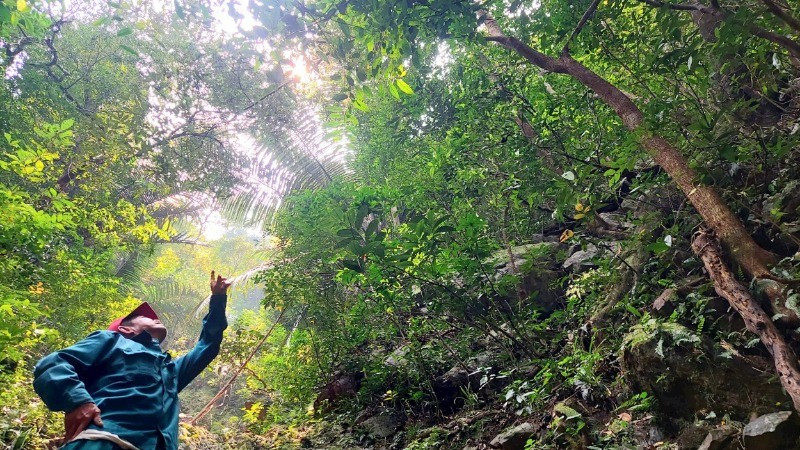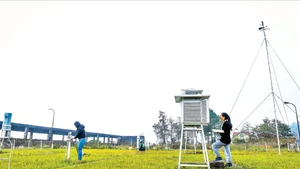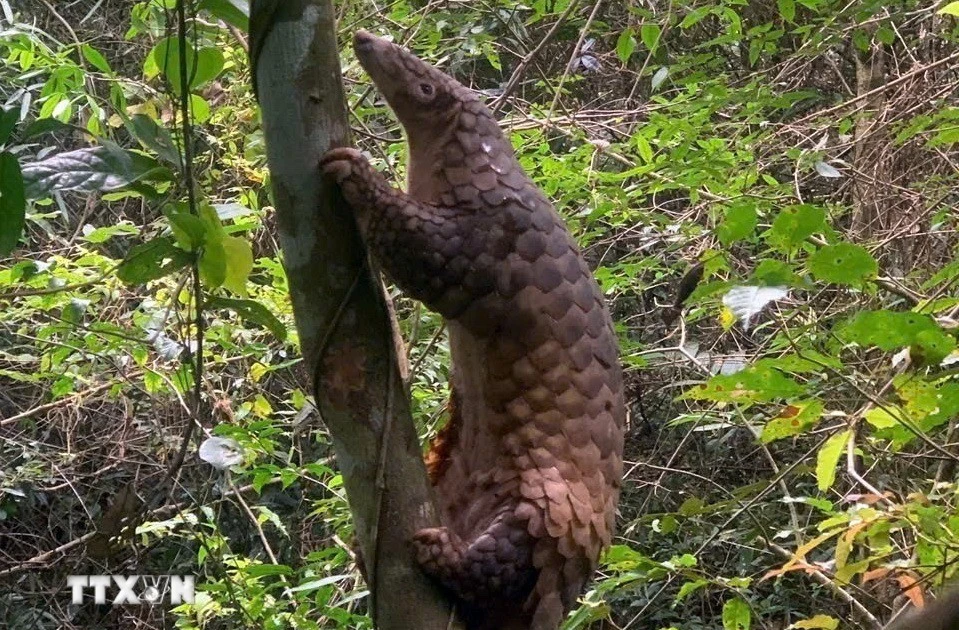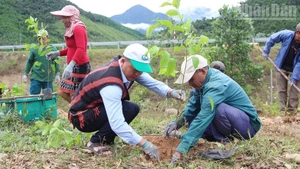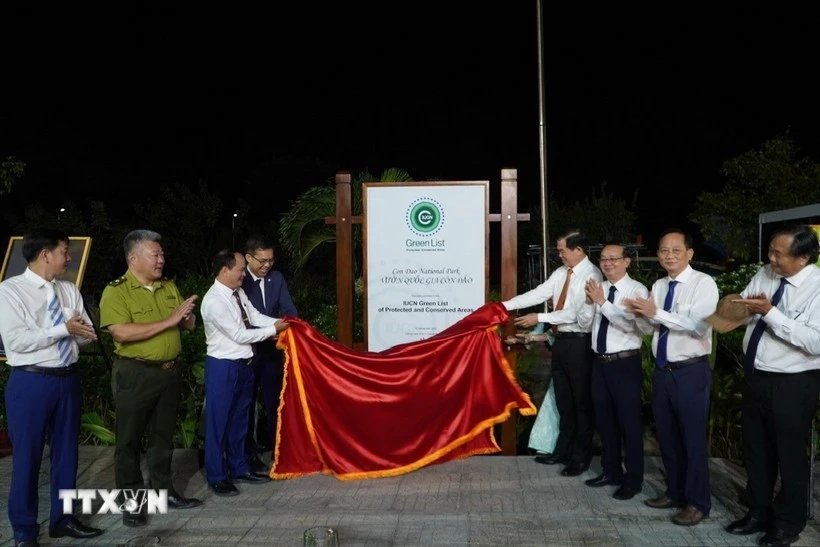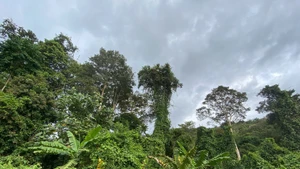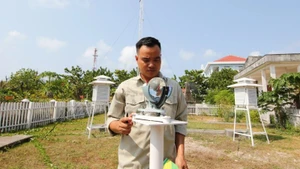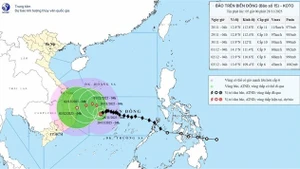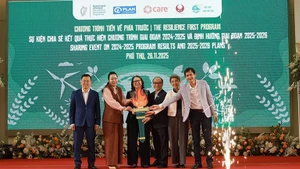This discovery holds particular significance as ancient records had documented the existence of such a forest, though generations had searched in vain. Previously, the ochna forest was referred to only as a legendary feature of the Mai Mountain-Han River scenic area.
Earlier forest patrols, typically conducted during the dry season, often missed these trees as they had already flowered and leafed, making them indistinguishable from other forest flora.
A rare sight in central Vietnam
According to Truong Quang Trung, Director of the Quang Tri Special-Use Forest Management Board, the ancient ochna forest was discovered four years ago during a routine forest inspection. The discovery occurred at the peak blooming season, from the first to the third lunar month. The trees bore the signature five-petaled yellow blossoms similar to those commonly grown in household gardens, yet featured large trunks and old-growth characteristics, concentrated in a relatively intact patch of natural forest.
The management board identified the species as Ochna integerrima and promptly instructed its personnel not to disclose the discovery, while enhancing general patrols and increasing protection in the area surrounding the forest.
Subsequent surveys estimated the forest to be several centuries old, occupying just a few hectares within a medium-elevation natural forest at around 300 meters above sea level. Alongside the nearly 300 ancient trees, numerous younger ochna trees with trunk diameters under 10 cm were also thriving. This unique and rare ochna population is remarkable not only for Quang Tri but for all of central Vietnam.
Ho Xuan Hoe, Director of the Quang Tri Department of Agriculture and Environment, stated that forest management and protection have become increasingly professionalised. In light of this, the department has chosen to publicly announce the discovery of the ancient ochna forest to initiate research and conservation efforts, to preserve this precious natural heritage.
The department has instructed the Forest Management Board to seek partnerships with programmes and projects to conduct biodiversity assessments.
According to cultural researcher Le Duc Tho, the Department of Agriculture and Environment’s decision to announce the discovery, accompanied by compelling images, has brought great joy to the province. The Han River still flows, and Mai Mountain is no longer a legend. Together, they symbolise the cultural and natural heritage of Quang Tri. The ancient ochna forest adds a rare and exceptional dimension to the region’s scenic treasures.
Unlocking scientific potential
Hoe said that the Department of Agriculture and Environment is planning an in-depth research initiative on the ancient ochna forest. The discovery not only offers aesthetic value but also opens up a range of scientific inquiries into the species’ biological characteristics, genetic diversity, and adaptability to the region’s unique environmental conditions.
Research will focus on natural regeneration, genetic diversity, climate adaptability, ecological significance, and the species’ potential role in high-value forest restoration.
To ensure better protection post-announcement, the Department of Agriculture and Environment has tasked the Management Board with creating a detailed management plan. This includes ramping up patrols, especially around peak times such as before and after Tet or during the dry season, when risks of unauthorised entry and illegal logging are higher.
A 24/7 protection outpost has been set up along the access route to the nature reserve and the ochna forest. Public awareness campaigns are also being intensified to help local communities understand the forest’s value and take part in its protection.
Going forward, the department plans to integrate strict oversight measures to ensure that any use of the forest’s values is tied to conservation responsibility, without compromising the natural ecosystem or forest security. Small-scale, controlled ecotourism will be prioritised.
Any tourism development must follow the principles of non-intrusion, ecological preservation, and harmony among conservation, education, and community livelihoods.
The ancient ochna forest will not become a mass tourist destination. Instead, it will serve as a specialised site for small research groups, experts, and those interested in native plant species and conservation values.
Trung expressed hope that local authorities will continue raising public awareness and fostering a supportive environment, so that forest-adjacent communities can become key stewards of this rare and valuable ochna forest.
At the same time, the management board welcomes collaboration with researchers, institutes, universities, professional organisations, and investment partners to fully explore and document the forest’s significance for conservation, education, tourism, and sustainable development.
